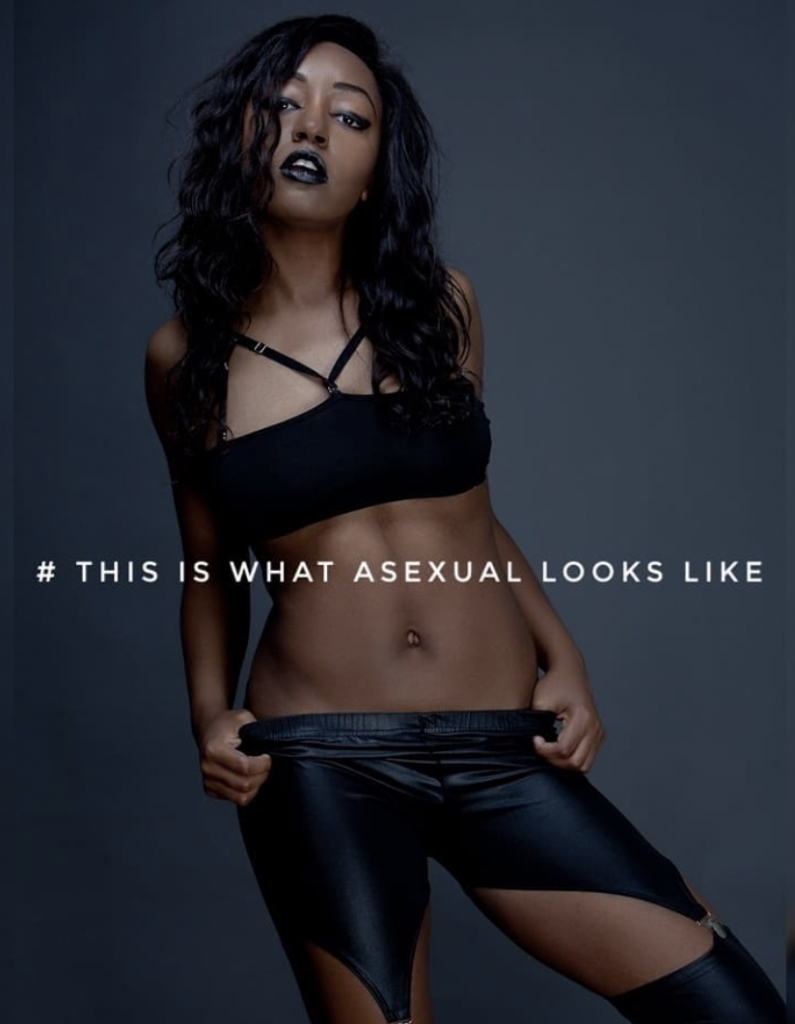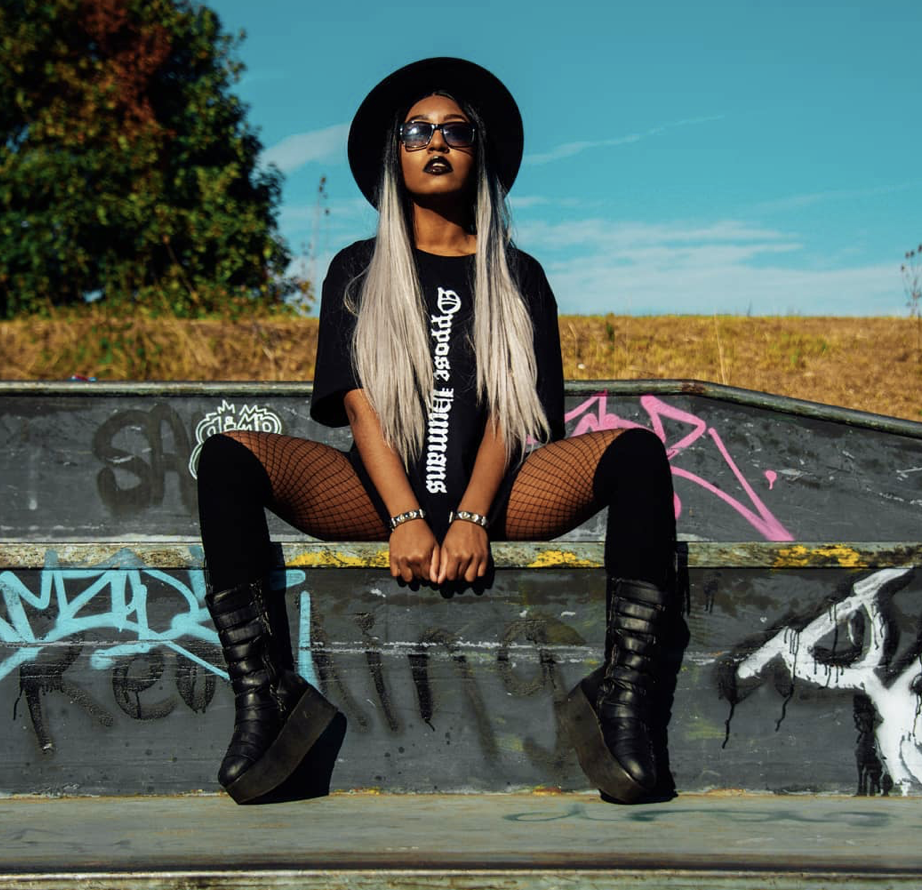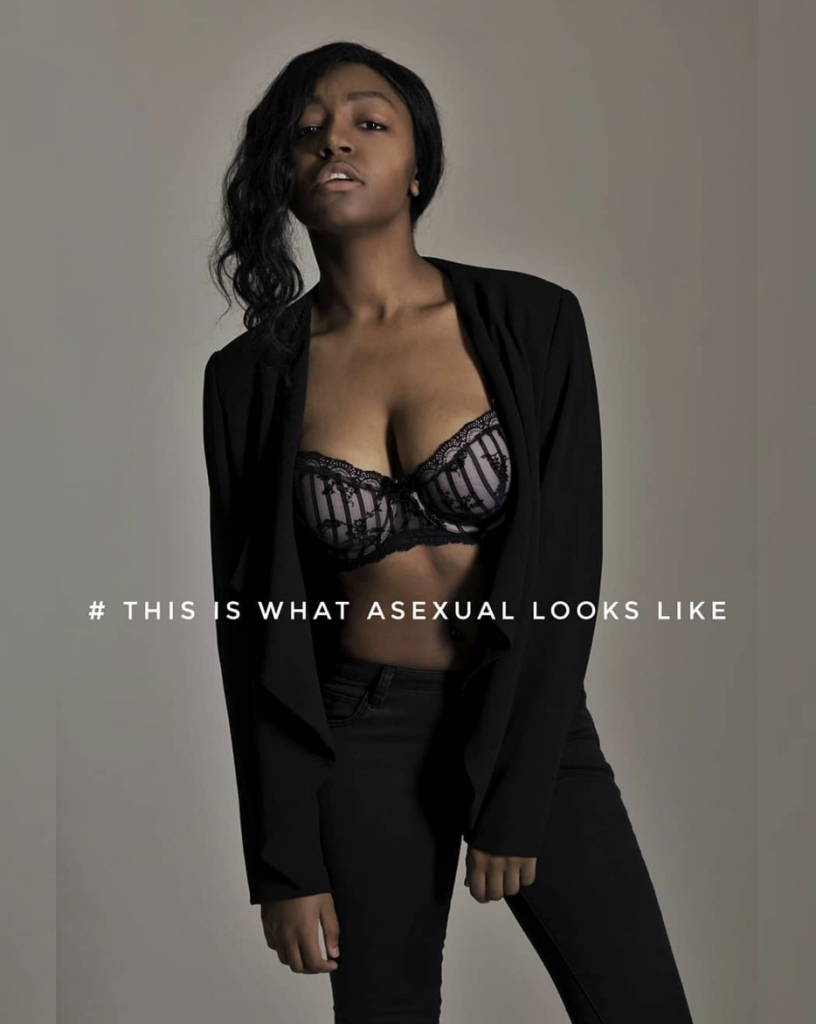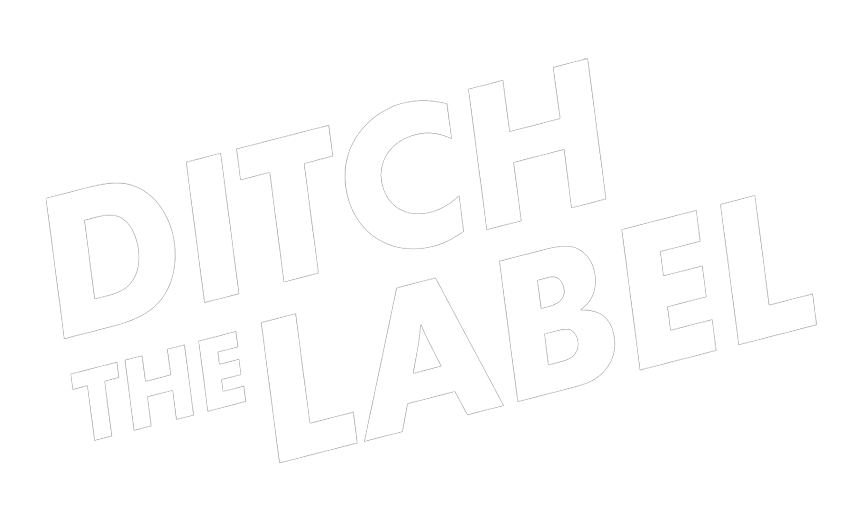Hi all! I’m Yasmin Benoit, a British fashion model and asexuality activist. I’ve known that I was aromantic-asexual from a young age, but didn’t come out publicly until 2017, when I decided to use my platform to raise awareness and dispel misconceptions about asexuality. It’s LGBT History Month, and I’ve comprised a list about 10 things I think people need to know about asexuality. Think I missed something? Feel free to add your own!
1) Asexuality isn’t a disorder
Asexuality isn’t a psychological disorder, nor is it a side effect of other mental health problems or developmental disorders, although there might be an overlap with some individuals. It also isn’t a hormonal imbalance, or the result of any kind of illness or physical issue. When I was younger, I used to think that my asexuality would disappear once my social anxiety and teenage insecurity went away. Now I’m a confident adult, and guess what, I’m still asexual!
2) Asexuality isn’t an attitude or a lifestyle choice
There is a difference between being asexual and anti-sex. Asexuality is a sexual orientation, not a lifestyle choice or an opinion. It isn’t the same as celibacy or abstinence, and it isn’t a way of sticking a middle finger up at sexual liberation. There are some asexual people who are repulsed by sex, but that does not mean that asexual people can’t hold sex-positive attitudes when it comes to other people, or themselves.
3) Asexual people aren’t just those who “haven’t found the right person”
If someone said to a straight man, “You’re not straight, you just haven’t found the right man yet,” it’d be both bizarre and inappropriate. That rhetoric doesn’t make sense when it’s applied to asexual people either. It suggests that people are only sexually attracted to the ‘right person,’ like their soulmate, or their other half but if that was the case, the world would be a very different place. Asexuality is a valid sexual orientation, it’s not a reflection of the attractiveness of others, or the result of having high standards and bad circumstances.

4) The A in LGBTQIA+ stands for Asexual
There is debate surrounding whether asexual people should be included in the community, but in my opinion – and the opinion of many others – the answer is yes. The LGBT+ community is about uniting and gaining equality for those who don’t fit into heteronormative boxes. It isn’t about who you do or don’t have sex with, or whether you have or haven’t had to handle a particular issue.
Asexuality can overlap with other letters in the initials, and even if you’re aromantic and cisgender (like myself), the chances are that you can’t relate to the heterosexual experience of society very much. Isn’t that what being queer is all about?
5) There is no asexual demographic
There are asexual men, women, non-binary people, trans people, crossing all ethnicities, races, ages, all nationalities, and religious identities. We’ve even existed throughout different time periods – asexuality isn’t a new thing.
When I attended the UK Asexuality Conference as a speaker in 2018, it was my first time being around a large group of asexual people, and I was so happy to see such a diverse group – including people over 50, asexual parents, business owners, people of colour, and people of different faiths (and no faiths) from all over the world. Despite the impression that the media gives you, asexual people aren’t all white, quirky millennials who spend a lot of time on Tumblr.
6) There is no way to ‘look asexual’
There’s a difference between not experiencing sexual attraction and not being attractive yourself, but there are people out there who mix that up. It probably has something to do with the way non-sexual/romantic people are portrayed in the media – as someone no one would be interested in anyway. This misconception is one of the reasons why I started the #ThisIsWhatAsexualLooks like hashtag, to show the diversity in how asexual people look. There is no asexual way to look or dress.
The idea that you have to put no effort into your appearance because you’re asexual suggests that people express themselves through fashion to please others. Asexual people do not have to cover up, wear no make-up, and keep their hair un-styled just because they don’t experience sexual attraction.

7) There is no asexual personality type
Again, this one is partially the media’s fault. Characters who don’t exhibit signs of sexual desire are often aliens or robotic, unable to understand human interaction and intimacy. They’re cold-hearted, socially detached and painfully awkward, but that doesn’t mean that asexual people actually have these characteristics.
There is no heterosexual personality, a homosexual personality, a bisexual personality, a transgender personality, or any other personality affiliated with a particular identity or sexual orientation. You can be optimistic, depressive, cheerful, subdued, extroverted, introverted, and still be asexual.
8) Asexuality is a spectrum
You don’t have to experience absolutely no sexual attraction to be asexual. Asexuality is a spectrum, which means that some people experience mild sexual attraction, like greysexual people, and those who only experience sexual attraction to those they develop a close relationship with, like demisexual people.
9) Some asexual people do want romantic relationships
Romantic orientation and sexual orientation are not the same thing, and many asexual people experience romantic attraction but not sexual attraction. This is where terms like heteroromantic, homoromantic, biromantic, and panromantic come from, with emphasis on a romantic connection rather than a sexual one. There are also asexual people who don’t experience romantic attraction – aromantic asexuals – like myself.

10) Asexual people can be happy
It’s an unfortunate narrative that asexual people will live loveless and unfulfilled lives, and it really isn’t true. Asexuality isn’t a problem, and it shouldn’t stop anyone from feeling confident and achieving whatever they want to achieve. I haven’t let being asexual stop me from breaking into the fashion industry, even working as a lingerie model, getting two degrees and providing a voice for the often forgotten letter in LGBTQIA+ at the same time. It also hasn’t stopped me from forming strong friendships, which is particularly important for an aromantic person.
Romantic asexual people can find love. They often date each other, and can enter polyamorous, queer-platonic and other ‘non-traditional’ relationships. Asexual people can date people who aren’t asexual and make it work. I know of asexual people who are married, asexual people with children, asexual people in happy and fulfilling relationships of all kinds, with people from within the asexual community and outside of it. Most importantly, I know that there are many asexual people who are happy with themselves.
For more awesome content on life as an asexual, and general life goals, follow Yasmin on Instagram @theyasminbenoit
Join the conversation. Reach out to the Ditch the Label Community here.













